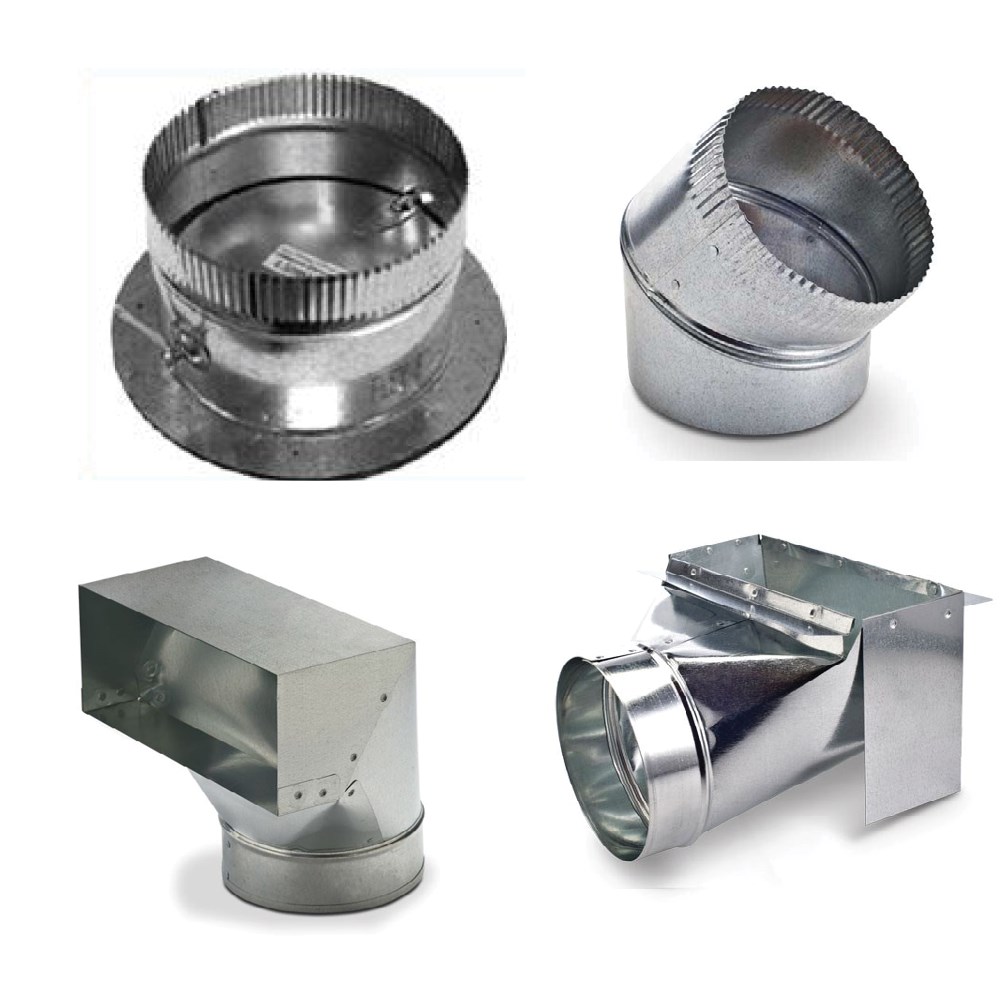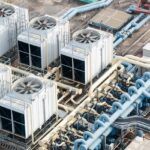Duct fittings are essential components in HVAC (Heating, Ventilation, and Air Conditioning) systems, used to connect sections of ductwork, change airflow direction, and control air distribution. Understanding the different types of duct fittings and their impacts on airflow, installation, and system efficiency is crucial for optimizing HVAC performance.
Types of Duct Fittings:
- Elbows:
- Types: Commonly available in 45-degree and 90-degree angles, elbows change the direction of airflow.
- Impact on Airflow: Elbows can create turbulence and pressure loss, especially if the angles are sharp. Long-radius elbows can reduce these issues by allowing smoother airflow.
- Installation: Elbows are relatively easy to install and essential for navigating around obstacles. Proper sealing at the joints is critical to prevent leaks.
- Tee Fittings:
- Types: T-shaped fittings that split airflow into two directions. They can be straight or branch off at different angles.
- Impact on Airflow: Tee fittings can create significant pressure loss and turbulence, particularly if the branches are not aligned properly. Balancing dampers are often needed to ensure even air distribution.
- Installation: Installing tee fittings requires careful planning to ensure balanced airflow to all branches. Proper sealing and support are essential to maintain system integrity.
- Reducers:
- Types: Fittings that transition from one duct size to another, either increasing (increasers) or decreasing (reducers) the diameter.
- Impact on Airflow: Reducers can cause pressure changes and turbulence. Smooth, gradual transitions are better for maintaining efficient airflow.
- Installation: Reducers are straightforward to install but must be properly sized to avoid bottlenecks or excessive pressure drops.
- Wyes:
- Types: Y-shaped fittings that split airflow into two branches at an angle, typically 45 degrees.
- Impact on Airflow: Wyes provide a smoother split of airflow compared to tee fittings, resulting in less turbulence and pressure loss.
- Installation: Wyes are more efficient than tees for splitting airflow and are relatively easy to install with proper alignment and sealing.
- Transitions:
- Types: Fittings that connect ducts of different shapes, such as rectangular to round transitions.
- Impact on Airflow: Transitions can cause turbulence and pressure loss if not designed properly. Smooth transitions are preferable to minimize these issues.
- Installation: Proper installation of transitions involves ensuring airtight connections and minimizing abrupt changes in duct shape.
- Dampers:
- Types: Devices inserted into ducts to control airflow. Common types include manual dampers, automatic dampers, and fire dampers.
- Impact on Airflow: Dampers can significantly impact airflow by regulating the amount of air passing through a duct. They are essential for balancing the system and directing airflow where needed.
- Installation: Dampers must be easily accessible for adjustment and maintenance. Proper sealing is crucial to prevent air leakage.
- Takeoffs:
- Types: Fittings used to branch off air from the main duct to smaller ducts or vents.
- Impact on Airflow: Takeoffs can create localized pressure drops and turbulence. Properly designed takeoffs with smooth transitions can minimize these effects.
- Installation: Installation involves cutting into the main duct and attaching the takeoff securely. Proper sealing around the connection is necessary to prevent leaks.
Impact on Airflow, Installation, and System Efficiency:
Airflow:
- Turbulence and Pressure Loss: Many duct fittings, especially those with sharp angles or abrupt changes, can cause turbulence and pressure loss. This can reduce system efficiency and increase energy consumption. Using long-radius elbows, smooth transitions, and properly sized fittings can help maintain efficient airflow.
- Balanced Distribution: Fittings like dampers and properly installed tee and wye fittings are essential for ensuring balanced air distribution. Uneven airflow can lead to hot or cold spots and reduced comfort levels.
Installation:
- Complexity: Some fittings, such as dampers and transitions, may require more complex installation procedures and precise alignment. Ensuring airtight connections is critical to prevent air leakage and maintain system efficiency.
- Flexibility: Certain fittings, like flexible elbows and adjustable reducers, offer flexibility during installation, allowing for adjustments and customization to fit specific system layouts.
System Efficiency:
- Energy Consumption: Efficient airflow with minimal turbulence and pressure loss contributes to lower energy consumption and operating costs. Proper selection and installation of fittings play a significant role in achieving this.
- Maintenance: Accessible and well-installed fittings facilitate easier maintenance, reducing downtime and ensuring the system operates efficiently over its lifespan. Regular inspections and adjustments can help maintain optimal performance.
Place Your Online Order: https://www.ductingsuppliesuk.com/shop-online
Conclusion:
Duct fittings are vital components in HVAC systems, influencing airflow, installation complexity, and overall system efficiency. Understanding the different types of fittings—such as elbows, tee fittings, reducers, wyes, transitions, dampers, and takeoffs—and their impacts can help in designing and maintaining an efficient HVAC system. Proper selection, installation, and maintenance of these fittings ensure optimal performance, balanced air distribution, and energy efficiency, ultimately contributing to a comfortable and cost-effective indoor environment.


